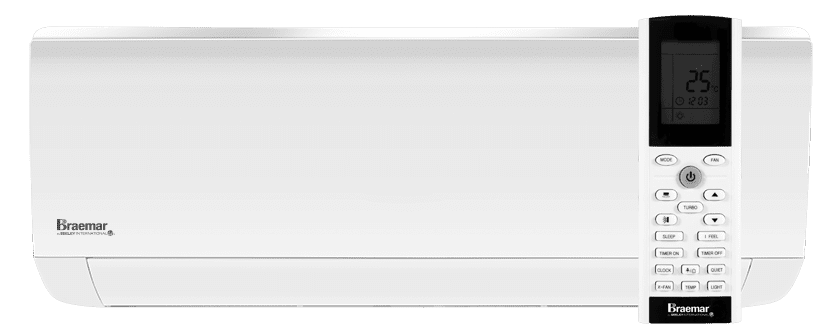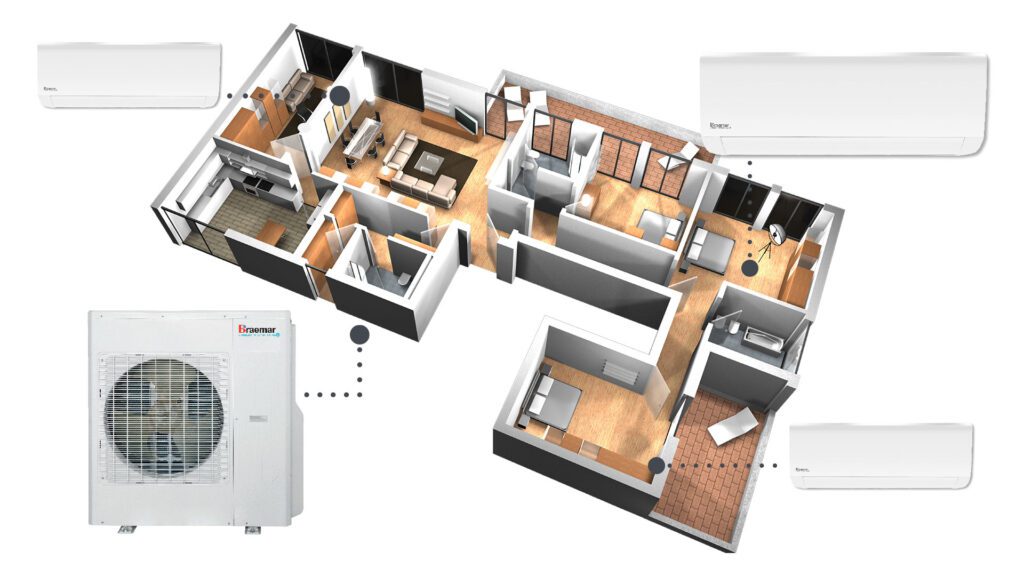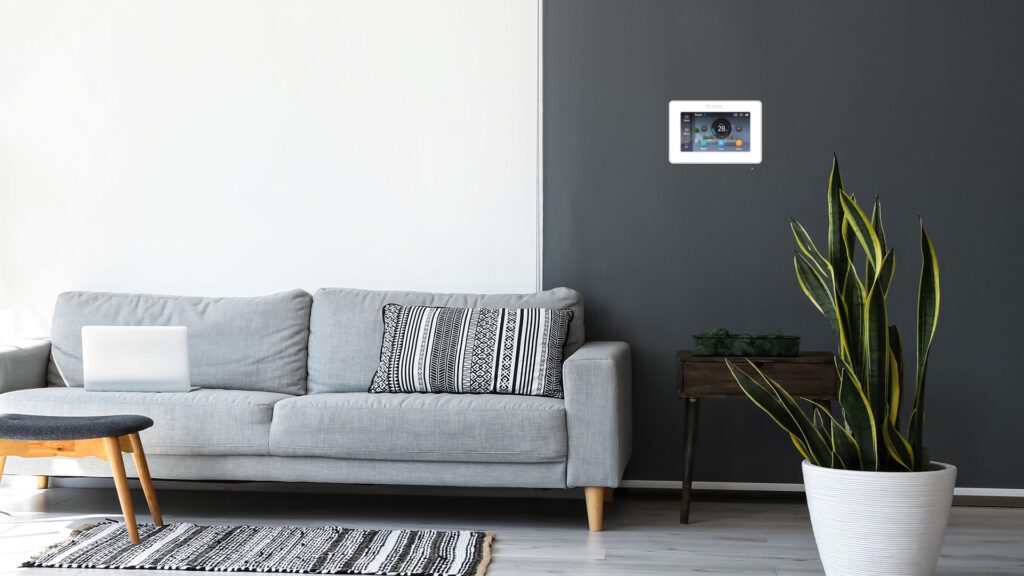Split System Air Conditioning
Split System Reverse Cycle Air Conditioning
The ideal solution to cool or heat just one room or area of your home or office; a wall mounted split system air conditioner consists of two parts; a wall mounted indoor unit and an outdoor unit.


Benefits & Features
Sleek and modern designs
Our split system air conditioning ranges offer sleek and modern designs.
The indoor unit also suits multi split air conditioning systems, thus delivering a consistent appearance throughout the home or office when a multi split is combined with single split systems.
Cost savings
Save running costs by heating or cooling rooms as required with different temperature settings in each room. High energy efficiency due to in-built DC inverter technology also results in significant savings in running costs when compared to conventional air conditioning models.
Comfort features
I Feel Mode, sleep mode and draught protection will keep you in comfort year round.
Built to last
With protective filters and anti-corrosion coating.
Zoned Energy Rating Label (ZERL)
The ZERL label provides detailed information for consumers to make an informed decision, including how much heating and cooling power a model has, energy efficiency based on location, electricity usage and noise production. Learn more here.
Other Reverse Cycle Air Conditioning Options
Frequently Asked Questions
Split System Air Conditioning FAQs
How does split system air conditioning work?
These air conditioners cool and heat one room or area of your home. They consist of an indoor wall-mounted unit that blows cool air around the room, and an outdoor unit that dissipates the heat from the cooled area. Refrigerants are used to cool or heat the air blown around the area being cooled.
Braemar split systems utilise DC inverter technology, which means they automatically regulate the power applied to the compressor to provide more precise climate control while using less energy.
An inverter is a power conversion circuit that electronically regulates the voltage, current and frequency of an air conditioner. This circuit controls the compressor, outdoor and indoor fans, maximising the air conditioner’s efficiency.
Compared to conventional models, inverter air conditioners provide:
- Quicker and finer temperature control
- Significantly lower running costs
- Elimination of temperature fluctuations
- Wider operating temperatures (model specific)
- Greatly reduced system noise inside and outside the home
Will a split system suit my needs?
Split systems are a cost effective way to heat and cool one room in your home. The Braemar range comes in a number of capacities, to suit small studies, right up to large open plan living spaces. Installation costs are generally much lower than for ducted systems, making split systems an attractive choice for budget-conscious home owners who still want efficient, quick heating and cooling in single rooms and large spaces. Braemar has single split systems (one indoor unit to one outdoor unit) and multi-split systems (where you can have a number of indoor units connected to the one outdoor unit).
How do I operate my unit efficiently?
- Allowing your system to gradually heat, or cool, will be more energy efficient than cranking your thermostat settings. Whilst it may be tempting to set the control to minimum for cooling, or, maximum for heating, a 1°C increase on the thermostat can equate to up to 10% more energy used*. For example, heating set to 22°C will have to work much harder than if it were set to 19°C, when heating.
- Use the settings features like timer and “I feel” mode to further maximise energy efficiency and comfort levels. Ideally, your unit should already be running before the hottest or coldest part of the day. Some of our controls also have “SAVE” function, where the lower limit for cooling and the upper limit for heating can be set, a great way to prevent excessive power bills.
* Information sourced from https://www.energy.gov.au/households/heating-and-cooling
What maintenance should I do?
- Dirt, leaves and debris can collect over time around your outdoor unit, or be sucked into the air inlet. Restriction to airflow will reduce the unit’s performance and efficiency, so be sure to check periodically and clear away any loose litter and dirt from the unit and air inlet.
- Clean your air filter on the indoor unit before summer and winter starts. Your owner’s manual will have step by step instructions on how to do this. The cleaner the return air filter, the more energy efficient your air conditioning system will be.

